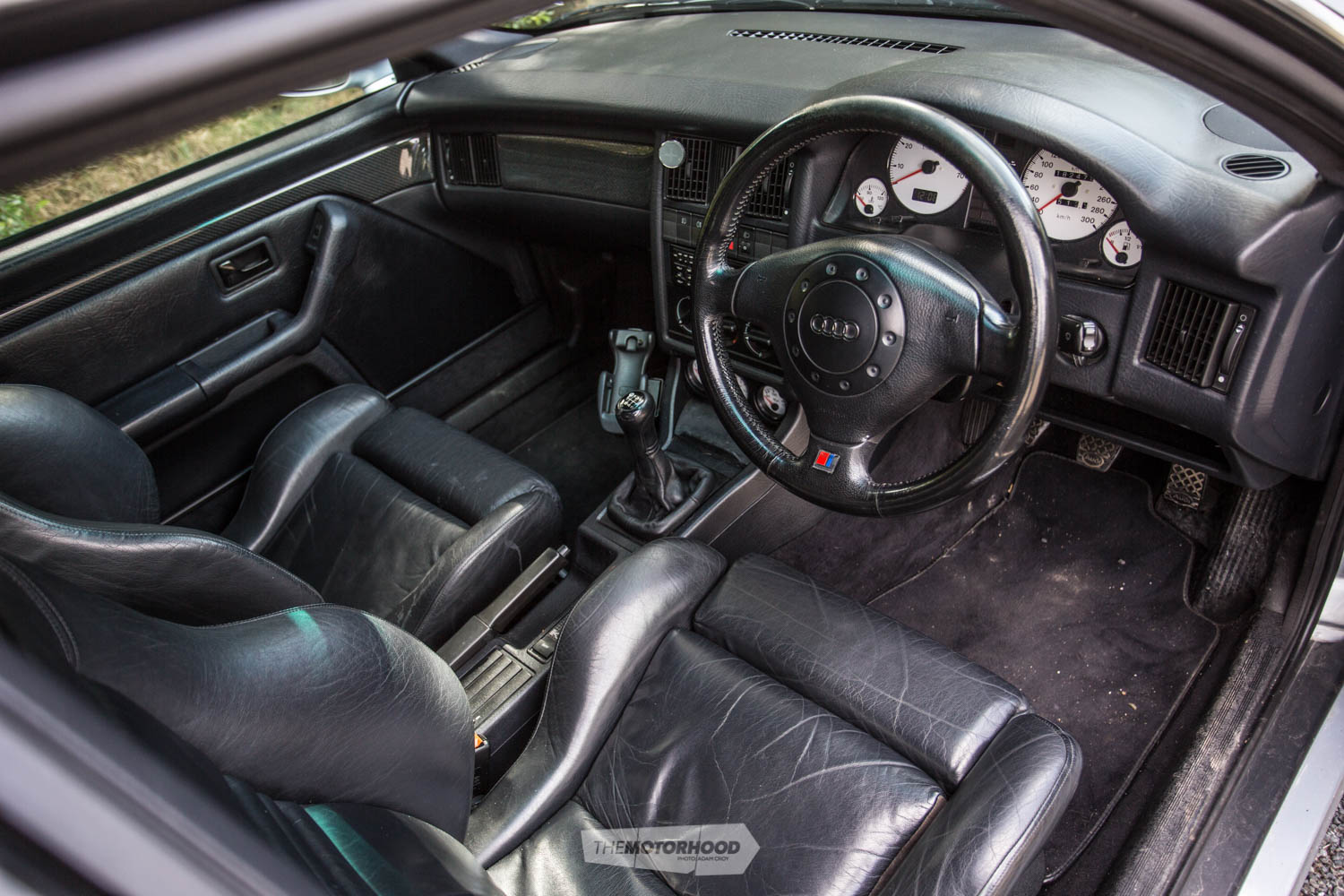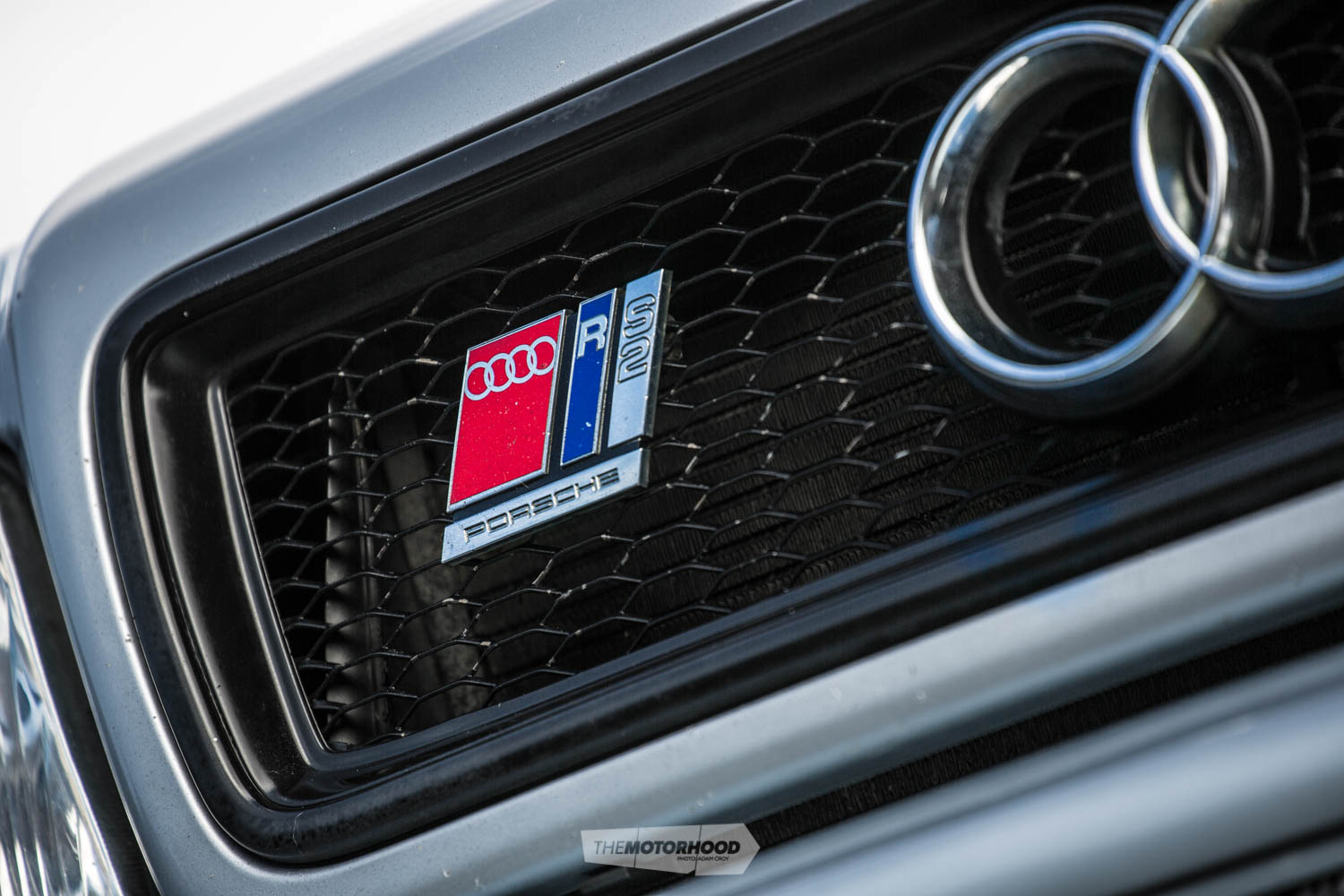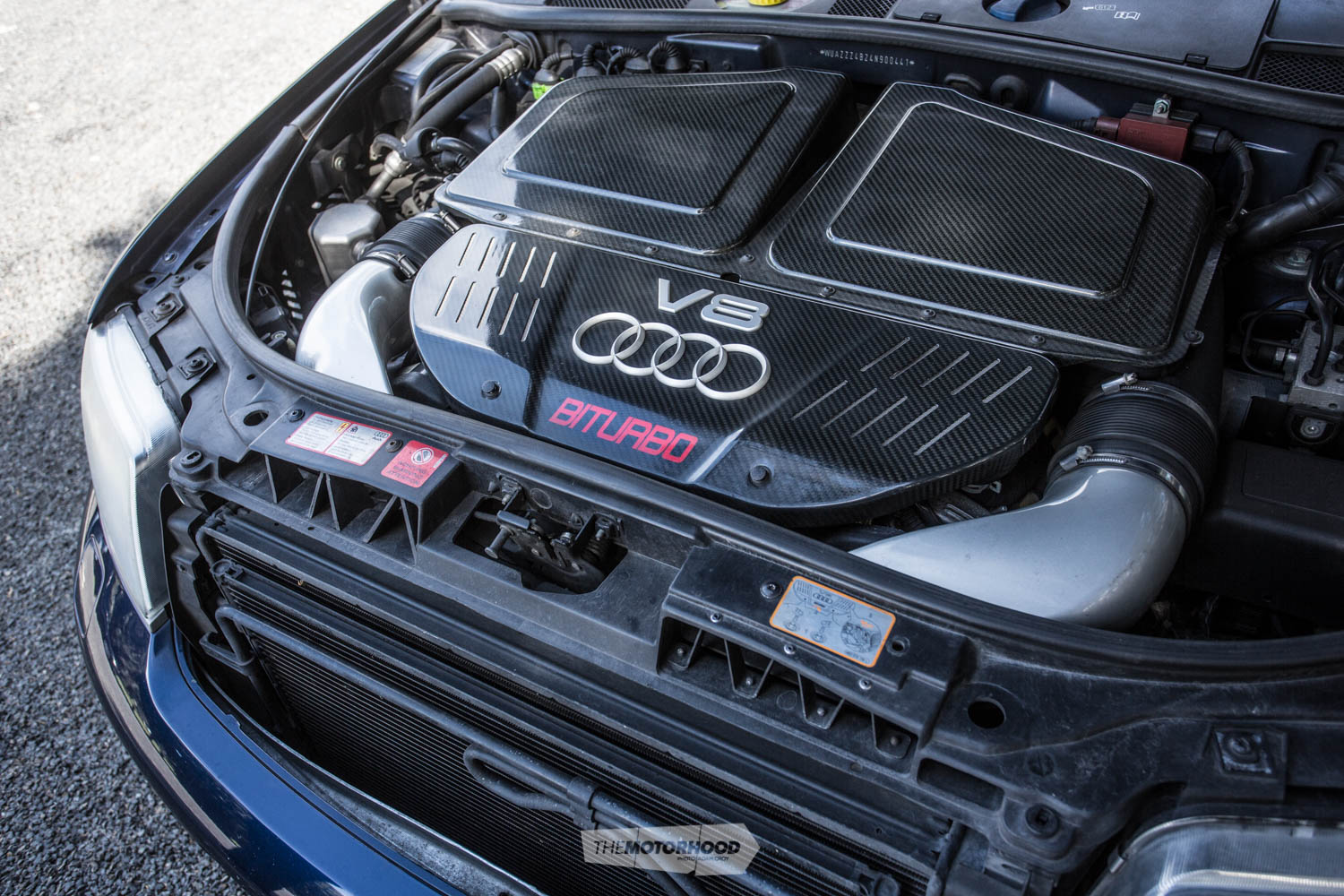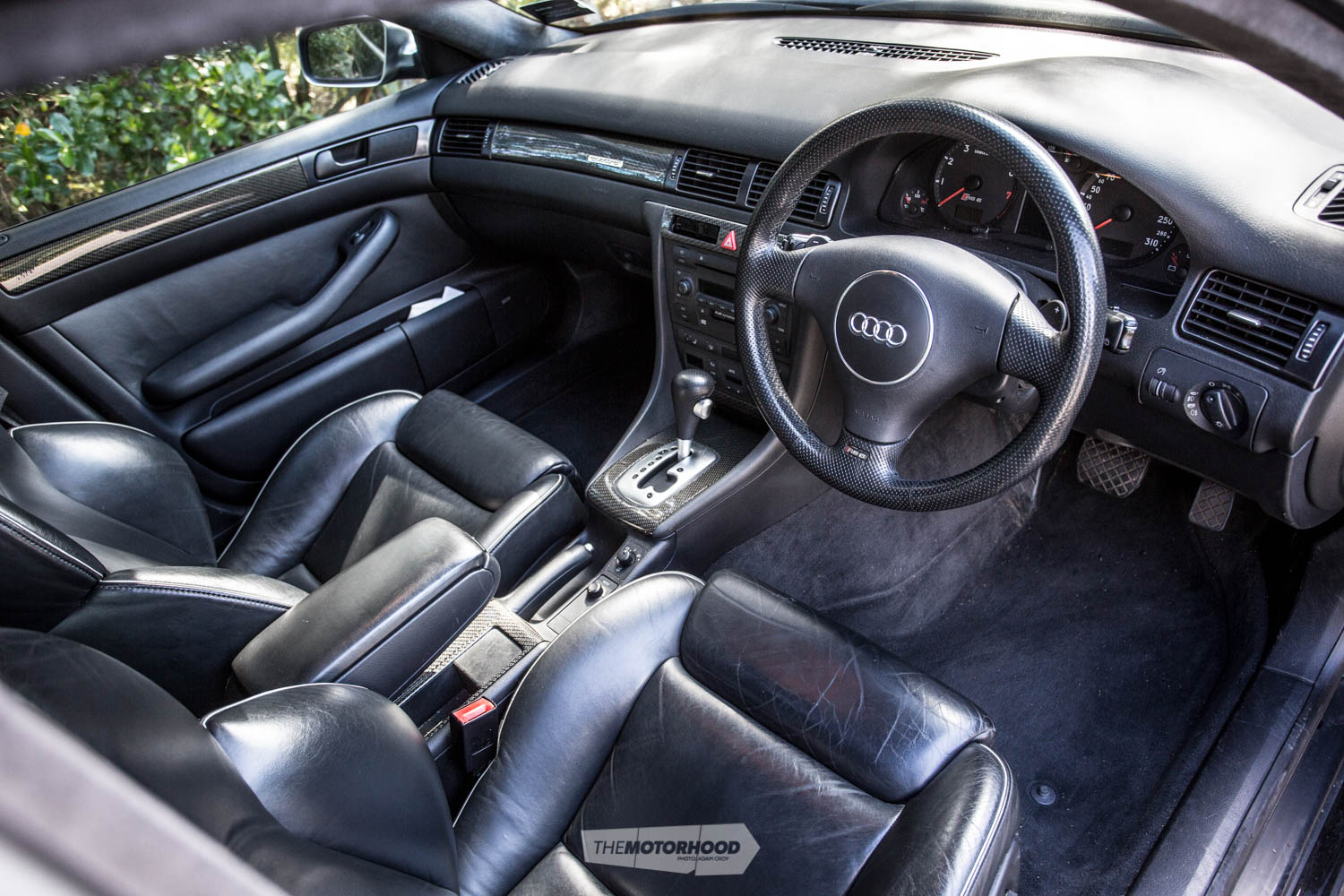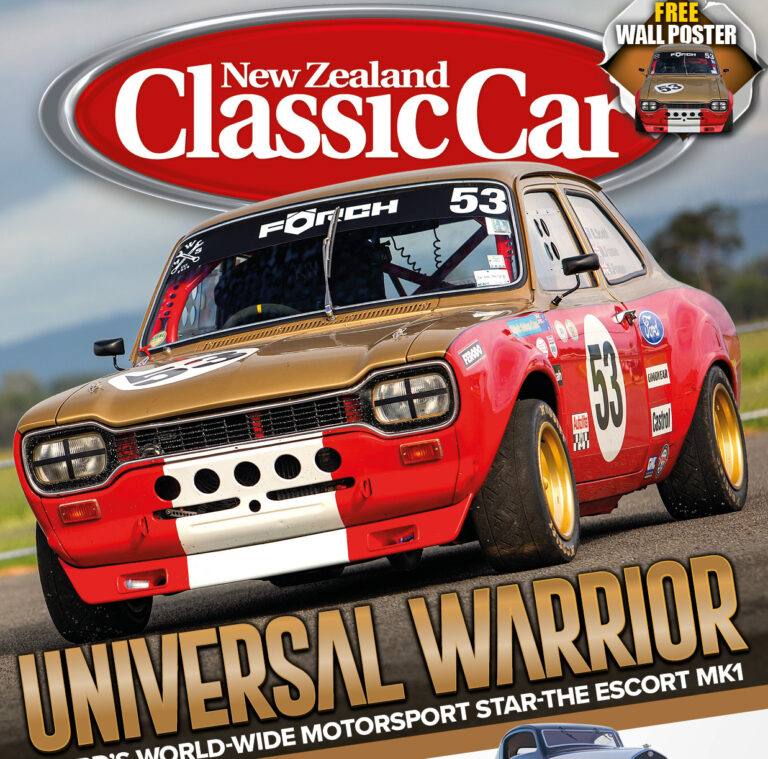The team spent the day with the three original RS station wagons (‘Avants’ in Audi-speak) to discover where the RS brand began its journey to become the king of the family hauler

For many moons now, the humble station wagon has been a place for families to bond on the long drive to Bonny Doon. Much like our cover car this month, the likes of the Holden Kingswood were classically a tool for children, dogs, garden implements, and pieces of furniture to be lugged from schools, beaches, and baches all across this nation of ours, and lugged in wallowy comfort. But there’s another side to the modern shooting brake (which must be about the best term for any type of car). A snap poll of those within your immediate vicinity who have an interest in cars will inevitably reveal one thing to be true. Simply ask them this: if they could have one car to complete every task, from supermarket shopping to towing the boat, hauling kids, and competing in track days, what would it be? Dollars to doughnuts, a good portion of your respondents will answer with some type of station wagon.
It might be an AMG, with both the C- and E-Types having their own version. Or, sticking closer to home, some might opt for the HSV Tourer. If you’re more of a realist, perhaps you could choose a Subaru and get an older Legacy GT (I simply can’t bring myself to endorse the name ‘Levorg’).
But I’d suggest a fair portion of respondents will mention something beginning with a big ‘RS’. While the current range of RS wagons is considered by many to be the pinnacle of performance and practicality, that’s not just a formula Audi has stumbled into. There’s a bit of heritage there, and we were lucky enough to gather together in one place the first three RS cars ever built and spend the day discovering how Audi came to corner this very important and very quick segment of the market.
‘RS’ stands for the German word rennsport, which translates to ‘racing sport’, making the RS moniker quite clear in its intentions — to go fast.
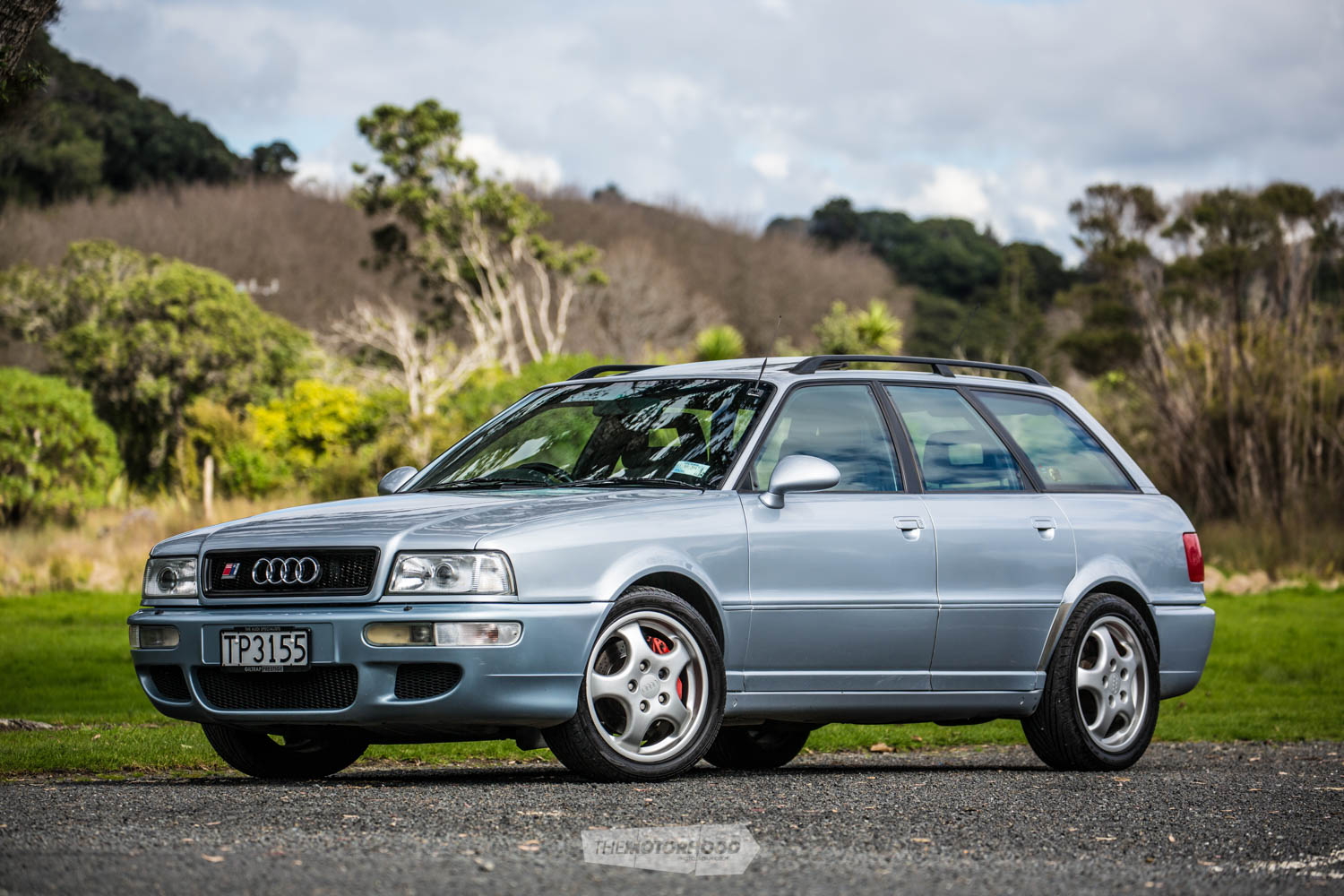
The RS2
The Audi S2 coupé cemented the brand among the big league of performance manufacturers. It proved that Audi wasn’t just the king off-road with the ahead-of-its-time full-time all-wheel-drive quattro system (see page 70 for more), it was also capable of making sports cars for the road. Soon enough, there was demand for more doors, and the C4 version of the S4 was built, followed by the collaboration between Audi and Porsche for this car — the RS2. Porsche agreed to be involved in the development of the RS2 on the proviso that a coupé version would not be built, as it knew that the potent formula suggested would be a true competitor for the 911.
The RS2 was mass produced as a wagon only (based on the B4 platform), with only several sedans being made, and driven by the development team. It was powered by a small but extremely punchy 2.2-litre in-line 20-valve five-cylinder engine, and the relationship to the fabled quattro rally car was clear. Astonishingly, the wee five-pot managed to produce 232kW. A serious amount of work was undertaken to get to this figure, with the standard turbocharger and intercooler replaced with larger, more capable units alongside high-flow injectors and an advanced engine control unit (ECU) upgrade from Bosch. In terms of the drive, this meant that the RS2 was capable of zero to 100kph in a quoted 5.2 seconds (but testing by several publications and owners at the time saw this down to 4.8 seconds) and on to a top speed of 262kph (limited).
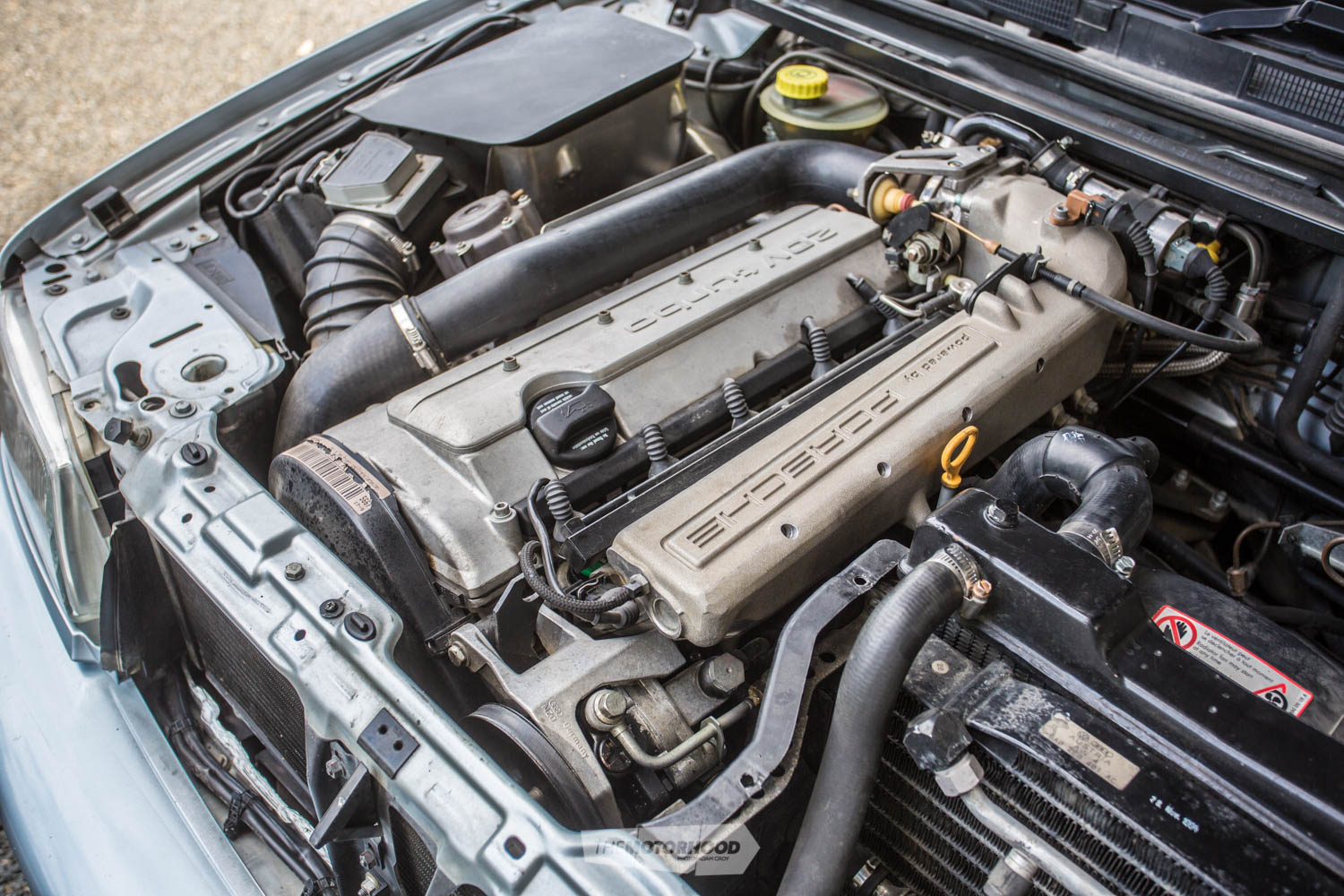
Touch of pedigree
With the power sorted, it came time for Porsche to add a touch of pedigree and the benefit of years of knowledge. Porsche provided a dual-circuit braking system (the RS2 wears Porsche-emblazoned calipers) as well as engineering Porsche ‘Cup’ alloy wheels, which give a good hint of its involvement in the project, as they bear more than a passing resemblance to 964 911 wheels. The suspension was also replaced, and Porsche had to begin from scratch, as it didn’t have much experience with the dynamics of a large empty space hanging over the rear axle. The suspension was lowered 40mm over the standard car to impart handling that screamed supercar rather than estate car. The RS2 was only available with a six-speed manual transmission, along with Audi’s quattro — which was vital to the RS2’s performance.
It didn’t take long for the RS2 — given its mind-boggling performance and evident Porsche pedigree — to become a hit with car fans far and wide. Of the 2900 RS2s built, only 180 right-hand-drive examples were made, with just 12 making it to New Zealand.
Verdict: The RS2 remains arguably the most desirable of a long line of very capable cars. However, since a few were driven into trees or sent offshore, there aren’t many left on New Zealand roads. If you have the cash and happen to be in the right place at the right time when one comes up for sale, grab it.
Punching above its weight
In a 1995 road test by Autocar UK, the RS2 was put up against the McLaren F1 road car and Jacques Villeneuve’s then-current Formula 1 car. The RS2 was timed from 0 to 30mph (48kph) at just 1.5 seconds, which the magazine confirmed as faster than both the McLaren F1 and Villeneuve’s Formula 1 car.
Four-point-five seconds
To put that figure into perspective, the outgoing 4.2-litre V8 RS4 also gets to 100km in 4.8 seconds with the help of a dual-clutch gearbox and a stonking 336kW V8. So not bad for an old hauler, then.
Audi RS2 Avant
Engine 2.2-litre in-line five, turbocharged, 20-valve KKK K24 turbocharger
Power 232kW
Torque 410Nm
Transmission Six-speed manual
0–100kph 5.2s (quoted), 4.8s (tested)
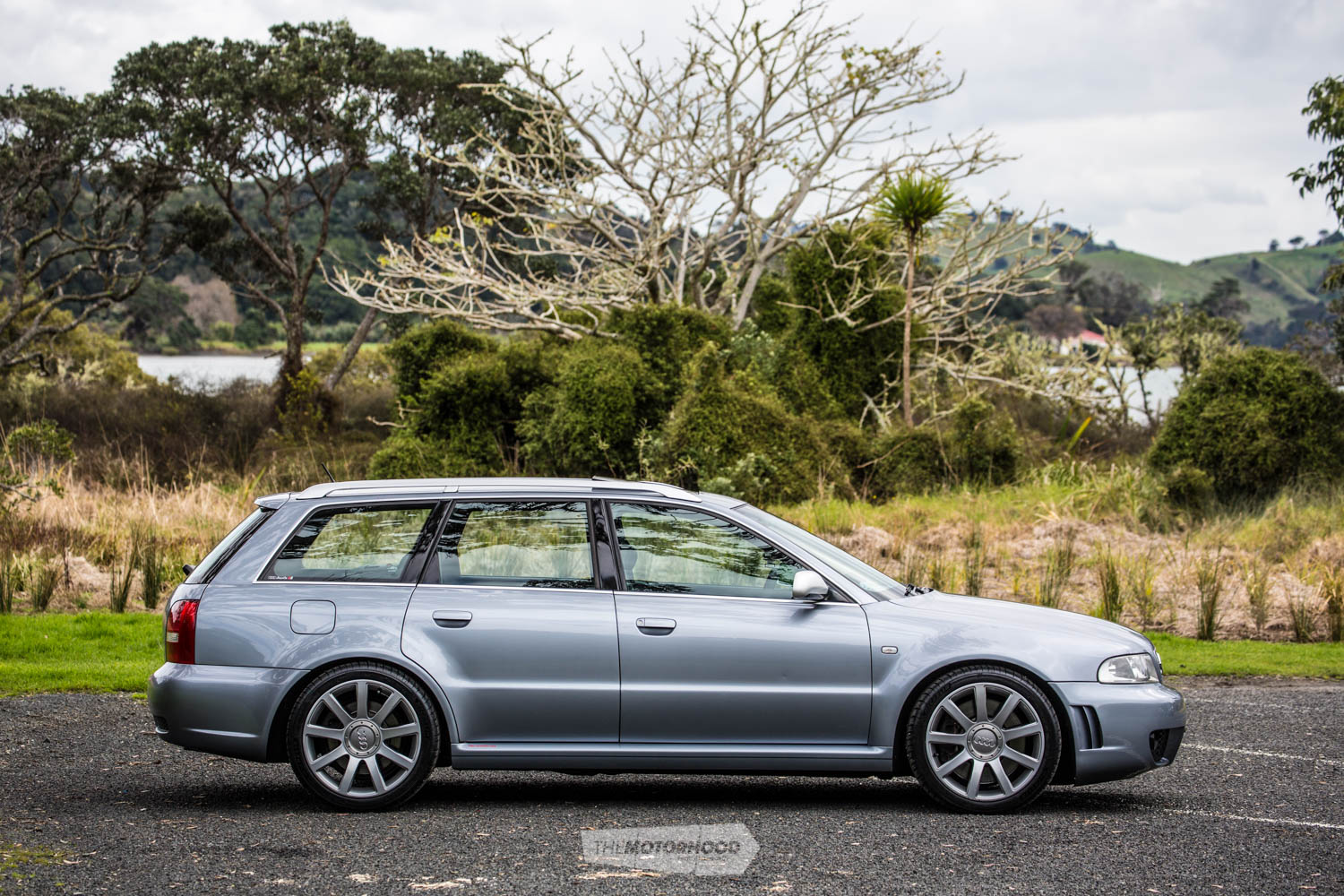
The B5 RS4
With the proof of concept for a quick, smallish station wagon in the bag, Audi decided the RS brand could stand on its own two feet. But there was a slight gap between drinks, as the B5 RS4 did not go into production until four years after the RS2 had ceased manufacture. The B5 A4 platform reintroduced and streamlined the naming process (meaning the ‘S4’ now made sense), and it introduced a new beast to the line-up, with a name a number of us are familiar with, the ‘RS4’.
The original RS4 was, and remains, a stunning car to look at, with perfect proportions and the sweeping, bulbous lines we love from our ’90s cars. For the B5 RS4, Audi cut ties with Porsche and went it alone. Kind of. It decided that, rather than developing an entire division in-house to come up with the power from its engines, it would buy a company already well versed in such things, and who better than the folks at Cosworth. Audi purchased the road-going engineering division of Cosworth, and renamed it ‘Cosworth Technology’.
The 2.7-litre V6 engine from the S4 was utilized, and, this time, Cosworth was tasked with getting a bit more power from the unit (186kW in the S4). The result was quite a good one from the engineers at Cosworth, who probably felt that they needed to impress their new bosses. With the figure of 285kW being thrown around showrooms and very early iterations of message boards around the world, the RS4 became the car to own. Demand for the first RS4 meant that Audi ended up doubling its production, with 6000 cars built by the end of the model run in 2001.
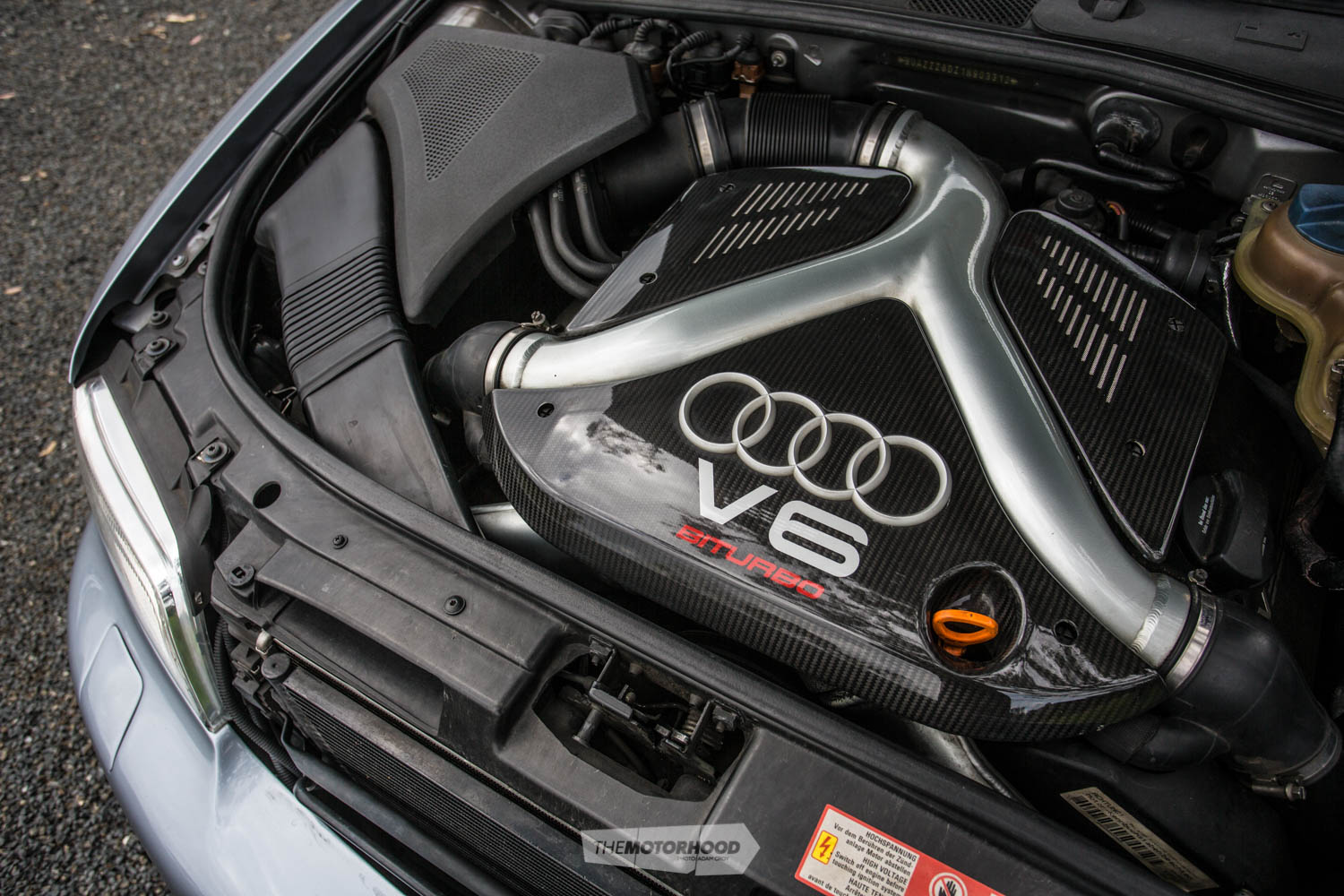
Success
Based on the success and, perhaps, novelty of the RS2, only station wagons were built for the B5 RS4 range. And once again, like the RS2, the model was only available with a six-speed manual gearbox. The implication from Audi was clear. This was a car designed for the active driver, the driver who, like the rest of us, wants to get out and drive to the end of the earth on the weekend, but one who might go for a bike ride when they get there.
The RS4 was something else through corners. Despite the lack of the current model’s electronic aids, which at speeds of up to 300kph distribute power to the inside or outside wheels depending on weight distribution, the slightly more mechanical quattro system did its job alarmingly well, making even the most spirited (or untalented) driver stick to the road on mad corners at ridiculous speeds. Verdict: To my eye, the B5 RS4 is the most attractive car in the line-up now. Despite the roundness of the body, it has aged gracefully and will surely go down as one of the most desirable classics among a new era of collectors.
RS rocks everywhere
Today’s RS line-up is jam-packed full of every conceivable model, but the RS name still holds a fair bit of water when it comes to performance. Our favourites of the current range are the hottest of hatches — the RS3 — and the king of the fast wagons, the C7 RS6.
Audi B5 RS4 Avant
Engine 2.7-litre V6, twin-turbocharged
Power 279kW
Torque 440Nm
Transmission Six-speed manual
0–100kph 4.8s (quoted), 4.6s (tested)
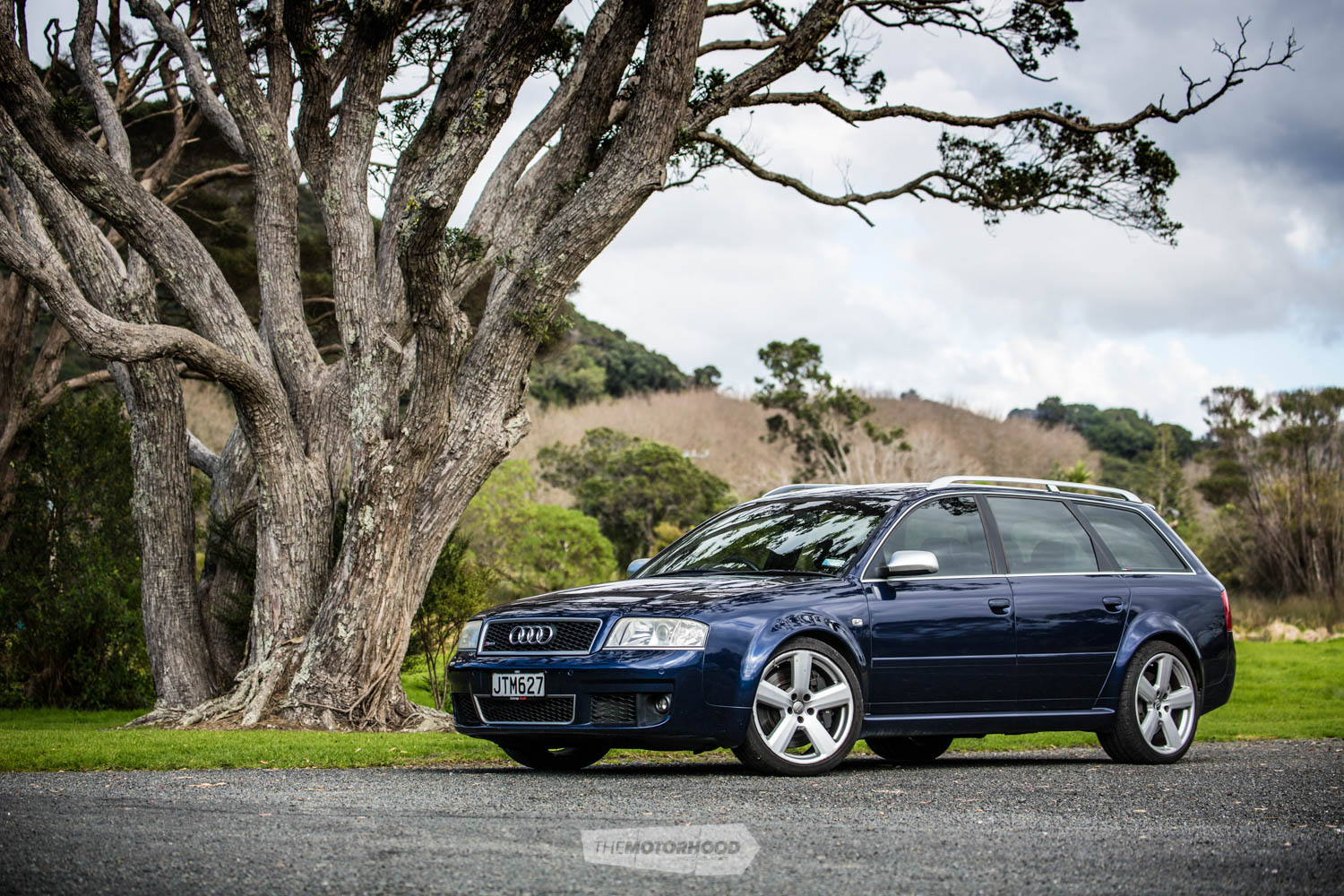
The C5 RS6
The RS4 finished its run in 2001 — back then, Audi only built one RS model at a time — which was the moment to change up the formula. So, it took the C5 A6 bodyshell, the one for the exec rather than the sales rep, and breathed some RS life into it. At this point, I have to make a disclaimer — the RS6 featured in this story is mine. It’s a car that’s very dear to my heart, and this tale of these three cars is one I’ve wanted to write for a while.
Somehow, I missed the excitement of the RS2 and RS4 when they were released, but the RS6 flicked a switch inside me. Suddenly, the fast-wagon movement made sense. A big V8 with a couple of turbos put on there for good measure, an automatic gearbox with steering wheel–mounted paddles, those flared wheel arches — oh, the arches — those wheels, the piping in the leather … The RS6 was just one of those cars that I ‘got’, the whole package spoke to me. From its release in 2003 in New Zealand, the RS6 became an instant cult classic, seemingly fitting oh-so-well the Kiwi ethos of big, fast, practical, but somewhat understated. Gone were the race seats and six-speed manual; instead, they were replaced with large, comfortable, heated seats with sophisticated piping and dual-zone climate control plus a five-speed automatic gearbox — it even got cruise control. Built for perhaps the more mature (or lazy) driver, the RS6 was built as a sedan as well as a station wagon to compete against Mercedes E55 and BMW’s M5. And compete it did.
Straight-line performance
With Audi’s Cosworth subsidiary once again at the helm to manage performance, the 4.2-litre V8 from the standard C5 A6 was used, but Cosworth managed to shoehorn on a couple of hairdryers to boost power up to a whopping 331kW, and push the big wagon to 100kph from a standstill in 4.7 seconds, the quickest time of them all at that stage. Being as large as it was, the RS6 isn’t quite as nimble as the smaller wagons that went before it. In fact, some complained of understeer due to the weight of the engine hanging over the front axle, which wanted to carry on in a straight line as the driver entered a corner. But, while it might lose a couple of seconds in the bends, when it comes to straight-line performance, the RS6 was (and still is) something to behold.
My RS6 is used for daily duties. It undertakes mundane, everyday drives with ease, then allows me to unleash a bit of power come the open road and some beautiful ribbons of tarmac. There are few cars that instil the confidence the RS6 does at speed. On occasion, you might find yourself looking down at the speedo and getting a fright at just how quickly you’re making your way to your destination.
Verdict: I’ve already professed my love for the RS6, so I’ll try to be as objective as possible. The RS6 was the first proper RS production performance car for Audi, with over 8000 made in both sedan and station-wagon layouts. This meant a good number made their way to New Zealand, and they remain a desirable, available, and affordable car for those wanting to take their first step on the RS ladder. Like any vehicle, you will want to ensure the car has a good service history.
Audi C5 RS6 Avant
Engine 4.2-litre V8, twin-turbocharged
Power 331kW
Torque 580Nm
Transmission Five-speed automatic
0–100kph 4.7s (quoted), 4.3s (tested)

This article was originally featured in NZ Classic Car issue No. 322 — you can purchase a print copy of the magazine at the link below


